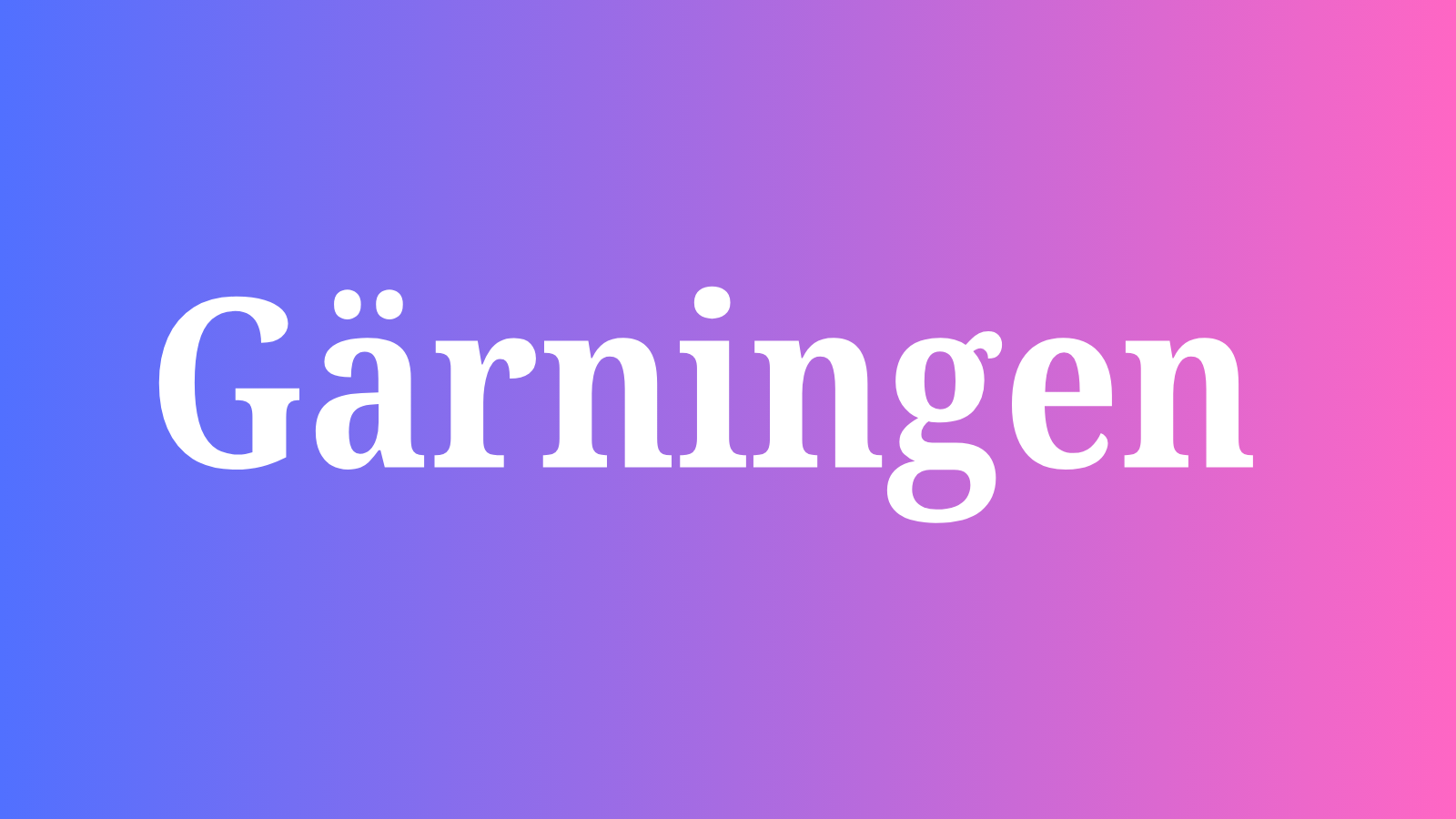Gärningen The Art of Intentional Action in a Distracted World
In a fast-paced world overflowing with distractions, where social media notifications, endless scrolling, and the pressure to be constantly productive reign supreme, living a meaningful life can feel like a distant dream. Amid this chaos, a concept quietly emerges as a powerful antidote to mindless living—Gärningen. Rooted in intentional action, Gärning-en encourages individuals to align their actions with purpose, value, and presence.
This article explores the philosophy of Gärning-en in depth—its historical roots, core principles, real-world applications, and transformative power in personal and professional life. Embracing Gärning-en can lead to clarity, empowerment, and a renewed connection to the things that truly matter.
What Is Gärningen?
At its core, Gärnin gen refers to the act of doing with intention. Derived from the Scandinavian word “gärning,” meaning “deed” or “act,” the philosophy extends beyond mere action to focus on the purpose and awareness behind each step we take. It invites us to live not reactively, but deliberately—to pause, reflect, and choose.
Gärning-en is not about productivity for productivity’s sake. Instead, it’s about making conscious choices that align with personal values and goals. It turns everyday decisions into meaningful moments and reminds us that we are the architects of our experiences.
Rather than letting external circumstances dictate our behaviors, Gärning-en empowers us to act with agency. Every gesture, from how we speak to others to how we pursue our passions, becomes an opportunity to live authentically.
The History and Origins of Gärnin gen
Though the term Gärning-en is of Scandinavian origin, the practice of intentional action is a global and timeless philosophy. Cultures across history have revered conscious living, seeing it as a path toward fulfillment and enlightenment.
Ancient Nordic Societies
In ancient Nordic societies, actions were deeply tied to values such as honor, courage, and integrity. Every decision had social and spiritual implications. Life was harsh, and every move required thoughtfulness. Gärning-e, in this context, was about survival and dignity.
Stoicism and Other Traditions
Similar ideas existed in Stoicism, where intentional living was considered a virtue. Philosophers like Epictetus and Marcus Aurelius emphasized acting with reason and aligning actions with moral character.
Eastern Influence
In Eastern traditions, such as Buddhism and Taoism, mindfulness and intention have long been central. These philosophies teach that awareness in action leads to harmony and liberation.
Modern Psychological Alignment
In the modern era, Gärningen aligns with psychological theories on mindfulness, self-determination, and value-driven behavior. Today, Gärning-en bridges the gap between ancient wisdom and modern complexity.
The Principles of Gärnin gen
To practice Gärning-en, one must adopt a mindset centered on several guiding principles. These values form the foundation of intentional action:
1. Intentionality
Every action should begin with a clear purpose. Whether choosing what to eat, how to spend time, or how to interact with others, the act of pausing and choosing mindfully lies at the heart of Gärning-en.
2. Mindfulness
Being present enhances awareness of one’s surroundings, emotions, and responses. It allows us to shift from automatic behaviors to thoughtful engagement.
3. Reflection
Gärning-en involves ongoing self-inquiry. Asking questions like “Why did I choose that?” or “What outcome do I seek?” strengthens the mind-action connection.
4. Alignment with Values
Actions must mirror internal values. Without alignment, even the most productive life can feel hollow.
5. Adaptability
Gärning-en recognizes that life is unpredictable. True intentionality includes flexibility—the willingness to adjust when necessary while remaining grounded in purpose.
6. Collective Engagement
Intentional action is not only personal but social. Gärningen encourages connection with others through shared purpose and collaboration.
Living Gärningen: Daily Applications
The beauty of Gärning-en is that it can be woven into every facet of daily life. It doesn’t require a drastic lifestyle change but a shift in awareness and intent.
Morning Intentions
Start your day by setting a clear intention. Instead of rushing into tasks, ask: “What matters today?” Writing down or verbalizing a purpose aligns your mindset.
Conscious Consumption
From food to digital media, Gärning-en encourages mindful consumption. Choose what nourishes your body, mind, and soul. Avoid distractions that dilute your focus.
Engaged Relationships
Be present in interactions. Listen actively. Speak thoughtfully. Gärning-en fosters authentic communication and deepens emotional bonds.
Meaningful Work
Regardless of your profession, infuse your tasks with intention. Understand the “why” behind your efforts, and seek alignment between work and values.
Evening Reflection
End the day by reflecting on your actions. What felt aligned? What didn’t? Gärning-en promotes continuous improvement through awareness.
Gärning-en in the Workplace
Applying Gärning-en in professional settings can transform workplace culture, enhancing both individual satisfaction and team effectiveness.
For Employers
- Clarify Purpose: Define company mission and ensure employees understand how their work contributes to it.
- Encourage Reflection: Offer space for goal setting, personal growth, and team alignment.
- Model Intentional Leadership: Leaders who act with clarity inspire trust and accountability.
For Employees
- Set Daily Intentions: Begin workdays with a purposeful mindset.
- Prioritize Tasks Intentionally: Focus on impact, not just activity.
- Collaborate Meaningfully: Engage with colleagues beyond transactions; nurture mutual respect and shared goals.
A workplace rooted in Gärning-en is not only productive but purpose-driven, resilient, and fulfilling.
Gärningen and Mental Health
The psychological benefits of Gärning-en are profound. When individuals act intentionally, they:
Reduce Anxiety
Living reactively fosters stress. Gärning-en helps people feel in control, reducing overwhelm and anxiety.
Enhance Self-Esteem
Knowing that your actions align with your beliefs creates a sense of integrity and self-respect.
Build Resilience
Reflection and adaptability improve coping skills. When faced with challenges, intentional individuals bounce back stronger.
Cultivate Gratitude
By being present, we notice life’s blessings. Gärningen enhances appreciation for small joys and achievements.
Support Mental Clarity
Intentional living reduces mental clutter. It clears space for focus, creativity, and peace.
The Challenges of Practicing Gärnin gen
Gärnin gen is simple in theory but often difficult in practice. Barriers include:
- Distractions: Constant digital noise and urgency can derail intentionality.
- Cultural Pressures: Societies that value busyness may mistake stillness for laziness.
- Perfectionism: Overthinking intentions can lead to paralysis instead of purposeful action.
- Inconsistency: Developing habits takes time and persistence.
The key is not perfection, but progress. Gärningen invites us to begin again, every moment.
Tools to Support Intentional Living
To cultivate Gärning-en, consider these tools and practices:
- Journaling: Reflect daily on choices, emotions, and values.
- Mindfulness Apps: Use tools like Headspace or Calm for grounding.
- Value Clarification Exercises: Define your core values and revisit them regularly.
- Digital Detoxes: Periodically unplug to reconnect with real-world intentions.
- Vision Boards: Visualize your goals and review them often.
These tools make Gärning-en tangible and actionable.
Case Study: A Life Transformed by Gärnin gen
Consider Anna, a marketing executive who felt burned out and directionless despite professional success. She began practicing Gärning-en by:
- Setting daily intentions
- Saying “no” to tasks that didn’t align with her values
- Engaging more deeply with her family
- Journaling nightly to reflect on her choices
Within months, Anna reported feeling happier, more connected, and more energized. She wasn’t working less—she was living more.
Gärning-en didn’t change her circumstances. It changed her relationship with life.
Conclusion:
In a world that moves at lightning speed, Gärning-en is a revolutionary act. It dares us to slow down, to question, to choose. It reminds us that every action matters—not because of its size, but because of its intent.
Living with intention transforms routine into ritual, work into purpose, and existence into a deeply fulfilling experience. Gärningen is not about doing more—it’s about doing better, deeper, and truer.
Embrace Gärning-en. Your most meaningful life awaits, one purposeful action at a time.







